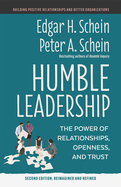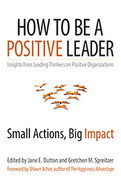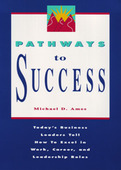Legendary organizational scholar Edgar Schein and former Silicon Valley executive Peter Schein say leadership today requires that people transcend their hierarchical roles and relate to each other as human beings-what they call humble leadership. In such relationships new ideas can flow freely, mistakes can come to light immediately, and course corrections can be made in real time rather than by committee or by order of the lone heroic CEO.
This second edition includes three new chapters. Chapter 1 zeros-in on the Schein's actionable definition of leadership-relative to management and administration-focused on leading people toward new and better. Chapter 2 introduces the concept of situational humility-leaders now need to shift between several types of relationships to deal with the accelerating complexity of a supply-constrained, quiet-quitting, and two-days-in-the-office world. And Chapter 5 explains how to create a culture of humble leadership.
Illustrated with examples from healthcare, government, the military, tech, and more, this is a compact, accessible guide to a leadership paradigm far better suited to a world that demands fast, nimble response to change, and a workplace hungry for mutual respect and trust.
2007
Show Me the Money provides a comprehensive system that enables business leaders, analysts, and consultants to make the case for their projects and get buy-in at the beginning, refine them during development, and communicate the ultimate results to all stakeholders once the projects are completed. Easy to read and fortified with case studies, checklists, tips, and tools, Show Me the Money clarifies and resolves the mystery surrounding the allocation of monetary values.
- Offers a comprehensive, proven method for measuring and evaluating the ROI of every aspect of any organizational initiative
- Shows how to make the business case for new projects at every stage of their development--before, during, and after implementation
- Includes case studies, checklists, tools, and tips to help implement this method
1994
Here, in their own inspiring words, over 100 CEOs, board chairs, and company presidents share their insights in one-page letters focusing on the qualities necessary for effective leadership and career success. The men and women featured in Pathways to Success come from diverse racial and ethnic backgrounds. Their companies range from small entrepreneurial firms to large corporations.
Organized by topic, these letters provide practical and encouraging insights on:
o Hard work
o Imagination
o Tolerance
o Honesty
o Self-knowledge
o Team-building, and more
Each letter is self-contained and to-the-point, capturing the personal experience and positive convictions of these distinguished business leaders. A biographical sketch accompanies each letter, describing the career path of the contributor as well as the major challenges and obstacles that person has overcome to achieve success. The book also contains thought-provoking exercises for individual use or group discussion.
Written for young people who aspire to successful business careers and leadership roles, this book will also be valuable for executives and managers, entrepreneurs, academics, consultants, and those who work with young people-counselors, teachers, mentors, and parents.
This booklet gives an overview of the Search Conference, a change strategy which uses open systems principles in strategic planning, thereby creating a well-articulated, achievable future with identifiable goals, a timetable, and action plans for realizing that future.
How can Asian Americans lead and influence in a way that feels culturally authentic?
19 years after her groundbreaking book, global leadership strategist Jane Hyun unveils Leadership Toolkit for Asians a guide for Asian Americans to build their capacity to lead and influence with a blueprint that is achievable and culturally relevant.
Asian Americans are the least likely demographic to be promoted or to have a mentor or sponsor they make up 13% of the professional workforce, but less than 3% of executive positions. This dynamic hurts everyone, and the solution calls us to embrace our unique perspectives while organizations create a more fertile environment for growing Asian talent.
This toolkit-based on Hyun's work with thousands of leaders-is filled with self-assessments, checklists, quizzes, and stories of Asian American leaders to help you put ideas into action. It will show you how to leverage your life experiences to craft a bespoke leadership journey.
- Assess: Identify your goals, cultural values and assets
- Equip: Navigate effectively with people who are different from you, push back against stereotypes, strengthen your networks, apply a developmental model to help you get there
- Transform: Create your own model and engage advocates as you put it into practice























